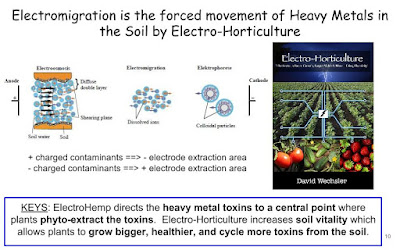Conclusions
It was demonstrated that hemp accumulates copper, chromium, nickel, and zinc preferentially in the leaves, while lead is distributed mainly in the stems of the plant. Such selective compartmentalization is enhanced when the plant is irrigated with water containing spirulina. It was found that, at higher concentrations, spirulina acts as a growth promoter, contributing to an increase in the final generated biomass. Also, it was demonstrated that the treatment with spirulina during the cultivation of the hemp induced an enhancement in the uptake of heavy metals, except for lead. Such a result may be explained by assuming a strong affinity of spirulina towards the lead, resulting in confinement of this metal inside the soil and hampering its uptake by the plant. The NMR analysis allowed to identify the crucial variations of the metabolic composition that were induced by the treatment with spirulina. Results reported in this work pave the way to further studies aimed to understand the optimal dose of spirulina to enhance the efficiency of this innovative combined remediation bio-system. Furthermore, the results described may encourage the application of spectroscopic methods for the rapid detection of structural changes in the various environmental spheres, allowing prompt intervention through the adoption of remediation schemes
The efficiency of hemp (Cannabis sativa L.) in remediating sites contaminated with heavy metals has received
great attention in recent years. The main advantage of this technology relies on its inherent sustainability with a
potential re-utilization of the significant amount of produced biomass which acts as a valuable flow resource. In
this study, a combined system consisting of Cannabis sativa L. (hemp) and the blue-green alga Arthrospira platensis
(spirulina) was tested to clean up soils contaminated with cadmium, chromium, copper, nickel, lead, and zinc.
The application of non-targeted NMR methods combined with ICP-AES quantification provided an efficient
strategy for detecting residual heavy metals within plant tissues and soil. Importantly, non-targeted metabolomic
analysis helped to reveal the relationships between metabolites distribution in hemp tissues and the sequestered
metals. It was demonstrated that hemp accumulates copper, chromium, nickel, and zinc preferentially in the
leaves, while lead is distributed mainly in the stems of the plant. Moreover, it was found that, at higher con-
centrations, spirulina acts as a growth promoter, contributing to an increase in the final generated biomass.
Results reported in this work indicate that the hemp/spirulina system represents a suitable tool for remediation
of metal contaminated soils by modulating biomass production and metals uptake.
1. Introduction
Dispersion of heavy metals in soils is an age-old problem deriving
from both natural and anthropic sources (Awa and Hadibarata, 2020).
Among the anthropic contribution to soil contamination by metals, land
application of treated wastewater, sewage sludge, fertilizers, and in-
dustrial activities are major concerns (Vareda et al., 2019). Unbalanced
amounts of heavy metals may cause perturbation of soil parameters with
consequent toxic effects on plants, in the nearby water supplies, and,
ultimately, in the whole food chain (Arora et al., 2008; Kumar et al.,
2019; Manzoor et al., 2018). Typically, elements, such as copper (Cu),
nickel (Ni), zinc (Zn), and chromium (Cr) are biologically essential for
plant growth but become toxic for animals and plants when their con-
centrations exceed certain threshold levels (Edelstein and Ben-Hur,
2018; Rizvi et al., 2020; Tiwari and Lata, 2018). Other heavy metals
often found in contaminated soils, such as cadmium (Cd) and lead (Pb)
are not essential for plants growth, and many studies associated their
presence with neurological and endocrinological toxicity for humans
along with carcinogenic effects (Ali and Khan, 2019; Pratush et al.,
2018; Rehman et al., 2018).
Since heavy metals are not biodegradable, they tend to accumulate in
the environment becoming a high risk for biota over several years after
their introduction in an ecosystem (Olsson et al., 1998; Tchounwou
et al., 2012; Zwolak et al., 2019). The search for new solutions that can
remediate heavy metals-contaminated soil is a critical prerequisite for
the sustainable development of agriculture (Edelstein and Ben-Hur,
2018; ; Vardhan et al., 2019; Wuana and Okieimen, 2011), thus repre-
senting a topic of paramount importance. The most consolidated stra-
tegies to remediate heavy-metals contaminated soils include physical
and chemical approaches, like isolation, through capping and subsurface
* Corresponding authors at: Department of Civil, Environmental, Land, Building Engineering and Chemistry (DICATECh), Polytechnic University of Bari, Via
Orabona, 4, Bari 70125, Italy.
E-mail addresses: biagia.musio@poliba.it (B. Musio), vito.gallo@poliba.it (V. Gallo).
Contents lists available at ScienceDirect
Environmental Advances
journal homepage: www.sciencedirect.com/journal/environmental-advances
https://doi.org/10.1016/j.envadv.2021.100144
Received 4 October 2021; Received in revised form 17 November 2021; Accepted 19 November 2021



.jpeg)





